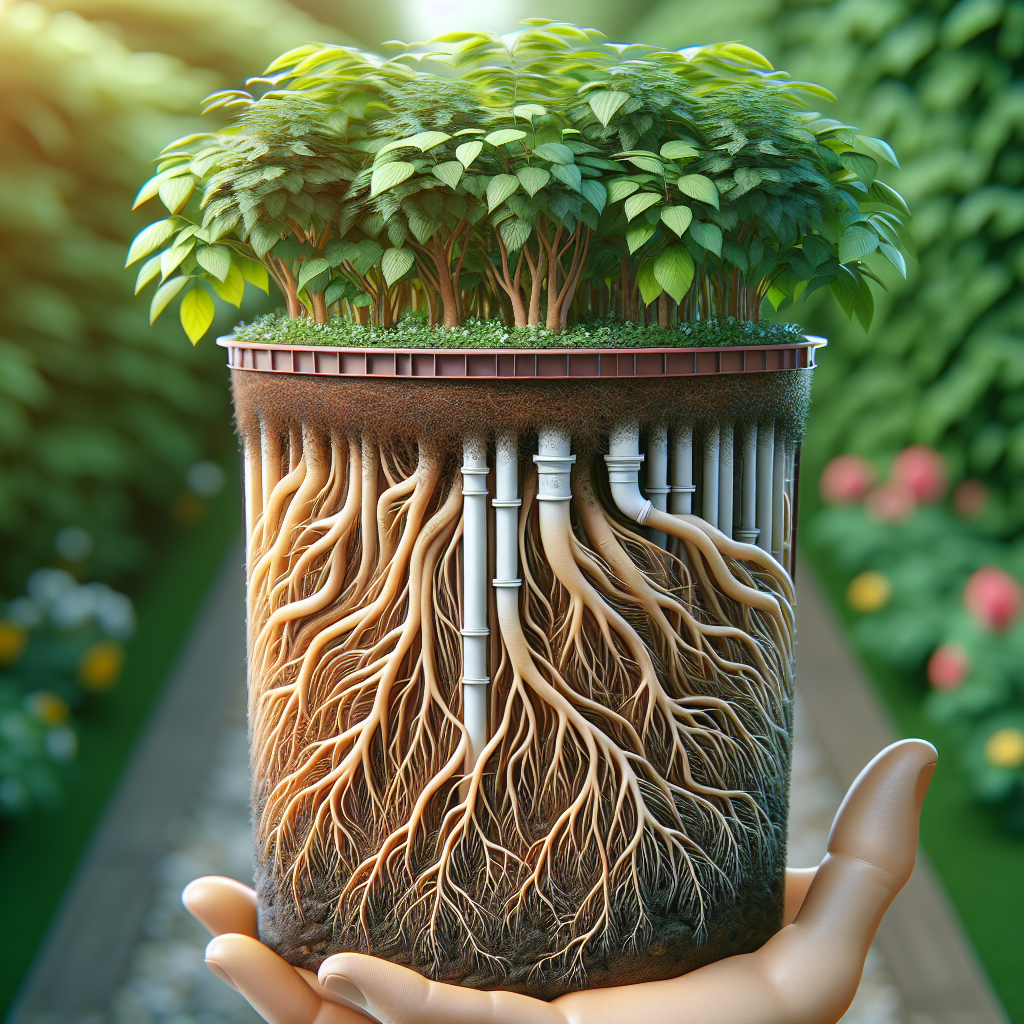Table of Contents
Are you struggling to keep your container plants thriving due to poor drainage issues? It can be frustrating to see your plants suffering from waterlogged roots, leading to stunted growth or even death. But fear not, there are ways to ensure healthy roots in containers by addressing drainage problems effectively.
Proper drainage is essential for container plants as it allows excess water to escape, preventing root rot and other water-related issues. By implementing some simple solutions and best practices, you can create optimal conditions for your plants to thrive and flourish. In this article, we will explore the importance of drainage for container plants and provide practical tips on how to ensure healthy roots in your potted garden.
Understanding Drainage
One of the most critical factors in maintaining healthy roots in container plants is proper drainage. When soil becomes waterlogged, it restricts oxygen flow to the roots, leading to suffocation and root rot. This can cause the plant’s overall health to deteriorate rapidly, resulting in wilting leaves, yellowing foliage, and ultimately plant death.
To prevent these issues, it is crucial to ensure that excess water can drain freely from the container. This can be achieved by using well-draining potting mix that is specifically formulated for container plants. These mixes are typically lightweight and porous, allowing water to flow through easily while still retaining enough moisture for the plant’s needs.
Choosing the Right Container
The type of container you choose can also have a significant impact on drainage. Porous materials such as terracotta or unglazed clay allow excess water to evaporate more readily than plastic or metal containers. Additionally, containers with drainage holes at the bottom are essential for allowing excess water to escape.
If your favorite pot doesn’t have drainage holes, don’t worry! You can still create adequate drainage by adding a layer of gravel or broken pottery pieces at the bottom of the container before adding soil. This will help prevent water from pooling at the bottom and ensure that roots have access to oxygenated soil.
Watering Wisely
Proper watering practices are key to maintaining healthy roots in container plants. Overwatering is a common mistake that many gardeners make, leading to root rot and other issues. To avoid this, it’s essential to water your plants only when the top inch of soil feels dry to the touch.
When watering, make sure you do so thoroughly until you see water draining out of the bottom of the container. This ensures that all parts of the root system receive adequate moisture while preventing waterlogged conditions. It’s also important not to let your pots sit in standing water as this can lead to root suffocation and disease.
Monitoring Drainage
Regularly monitoring your container plants’ drainage is crucial for ensuring healthy roots. Check for signs of overwatering such as yellowing leaves or wilting foliage and adjust your watering schedule accordingly. If you notice that your potting mix is becoming compacted or retaining too much moisture, consider repotting your plant with fresh soil.
In some cases, you may need to drill additional drainage holes in your containers if they are not providing adequate airflow. This simple fix can make a world of difference in preventing root rot and promoting healthy growth in your plants.
By taking proactive steps to address drainage issues in your container garden, you can create optimal conditions for healthy root development. With proper watering practices, well-draining potting mix, and suitable containers, you can ensure that your potted plants thrive and flourish year-round.
FAQs
1. How often should I water my container plants?
– Water your plants only when the top inch of soil feels dry to the touch.
2. Can I use regular garden soil for my container plants?
– It’s best to use a well-draining potting mix specifically formulated for container plants.
3. What should I do if my plant shows signs of overwatering?
– Adjust your watering schedule and check for compacted soil or inadequate drainage.
4. How can I improve drainage in my existing containers?
– Add gravel or broken pottery pieces at the bottom or drill additional holes if needed.
By following these tips and guidelines on dealing with drainage issues in containers, you can set yourself up for success in growing healthy and vibrant potted plants year-round!













